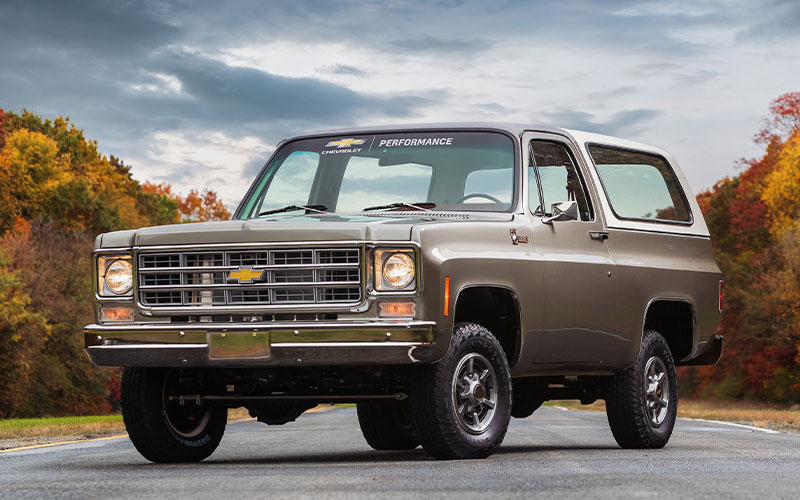Restomod: Bringing Classics Forward
As technology continues to improve faster than ever it’s now turning classic muscle cars into restomods with modern performance abilities.
A More Modern Solution

Going fast is a feeling that many of us enjoy. It’s the need for speed that motivated old-school hot rodders to create muscle cars in the first place. Cars in the 50s, 60s, and 70s were really heavy. To make them fast, automakers had only one option to move that heavy metal quickly. The solution was to shove the biggest, most powerful engine available under the hood. Indeed, it made muscle cars very fast, but only in a straight line. Their heft still slowed them down with regard to braking and handling. Now, there’s a solution. Don’t just restore a classic car, restomod it.
What Exactly Is Restomodding?

To put it simply, to restomod is to restore and modify a classic car. Note that we aren’t restricting the term to just classic muscle cars. All sorts of performance machines from the past can be restomods. The same general principles will apply as you’ll see later. The end goal is typically to preserve the old-school feel of the interior and exterior while offering modern performance, comfort, and safety upgrades. Restomods are distinctly different from many other types of classic car rebuilds. They aren’t all original and they aren’t fully rebuilt from the ground up with performance in mind like a Pro Touring car is. Instead, they aim to strike a balance between both.
That can be a very hard balance to find since many technologies that improve safety can require modifications that can be spotted externally. For example, old-school muscle cars typically have very poor braking ability. To solve that problem, restomod creators can add modern disc brakes and brake calipers. Oftentimes, that means adding larger-than-stock wheels to fit the new modern braking components.

Of course, adding safety equipment isn’t where restomodding stops. Owners can improve power through the use of bigger engines, faster transmissions, or lighter components. Hoods might need to be changed to fit new components as well. They can also reduce the way the body, chassis, and suspension components twist and flex by replacing them with stronger modern alternatives. Each of these modifications can imbue a classic muscle car with modern performance car handling, braking, ride comfort, and offer even better acceleration. Let’s take a look at some of the most common modifications and the benefits they provide.
Popular Modifications

Lots of restomod projects start out with adding power through the use of a more modern powertrain. That doesn’t always mean a bigger block though as some engines manage to pack a bigger punch in a smaller package these days. At the same time, some restomod projects are going all-electric and swapping in batteries and a motor instead of an engine. Of course, to reel that power in, better brakes are required.
Many muscle cars rolled off of the production line with drum brakes. While competent for the time, they are nowhere near as powerful as modern discs. To that end, numerous companies make upgrade kits for muscle cars and other classic cars that allow buyers to swap to disc brakes with minimal modifications otherwise.

Adding a modern suspension setup to a muscle car can completely change the way it rolls down the road. Instead of a floaty or rough ride, new components allow these classic cars to glide the same way modern cars do. It can also limit body roll, something muscle cars are notorious for. In addition, improving suspension components on the front of the car often has the effect of improving steering feel and feedback.
It also contributes to making the car more enjoyable to drive often. Another way some restomodders do that is by including modern interior features as a part of their build. Updated climate control systems offer better air conditioning and heat than original units. Some companies also make modern Bluetooth radios that look original but offer modern convenience. Of course, others will modernize the interior a little bit with an infotainment touchscreen or even a digital dashboard.
Some Stunning Examples
Icon’s Chevrolet Thriftmaster

This stunning truck offers the kind of performance that most modern trucks can’t keep up with. Under its hood lurks a 430-horsepower 6.2-liter V8. It’s connected to a four-speed automatic with rear-wheel drive. At each corner sits a fully independent suspension and Brembo brakes. As mentioned above, that improves ride, handling, comfort, and safety in one stunning package. They even managed to get some old-school wheels over those big brakes.
Classic Recreations Shelby GT350CR

Externally, very little about this classic Mustang will give away anything about what’s happening beneath the skin. The small CR at the end of the name will hint to those in the know that this is a Classic Restorations restomod with up to 545-horsepower. It also has a coilover suspension, a tubular subframe, and oversized disc brakes to reign in all those ponies. Oh, and they’ll add a couple bottles of nitrous if you ask them to.
Automobili Maggiore M Restomod Project

Remember how we said that this hobby isn’t limited to muscle cars? Gian Luca Maggiore grew up idolizing Tom Sellek and his noteworthy Ferrari co-star. So as an adult he’s created a brilliant tribute with modern performance and updated styling. While the original chassis lies underneath, the body of this 308 is all carbon fiber and has seen delicate nips and tucks that make it unique. The engine is original but has been reworked for up to 400-horsepower. The shifter has been carved out of marble quarried from the town where Maggiore is based. This Ferrari does everything better than when it was original and somehow feels even more special.









